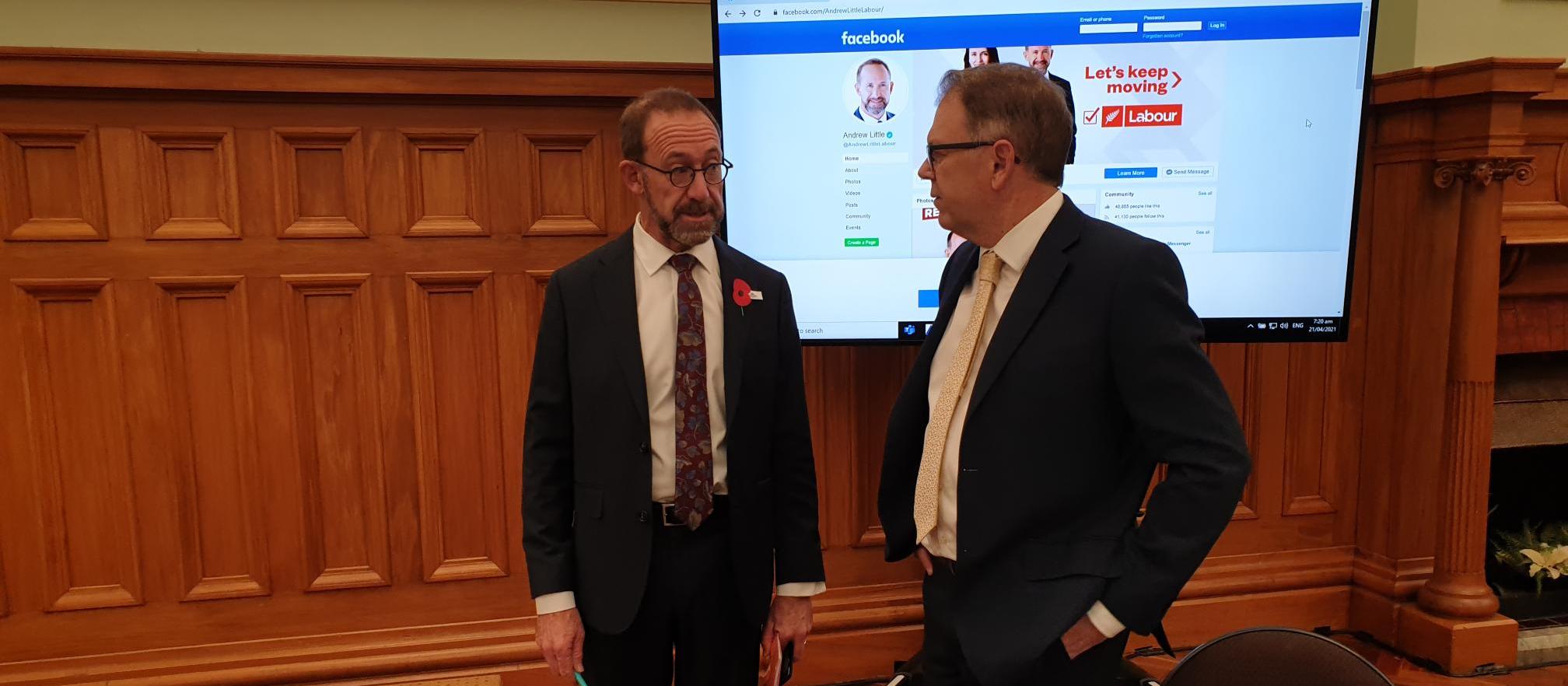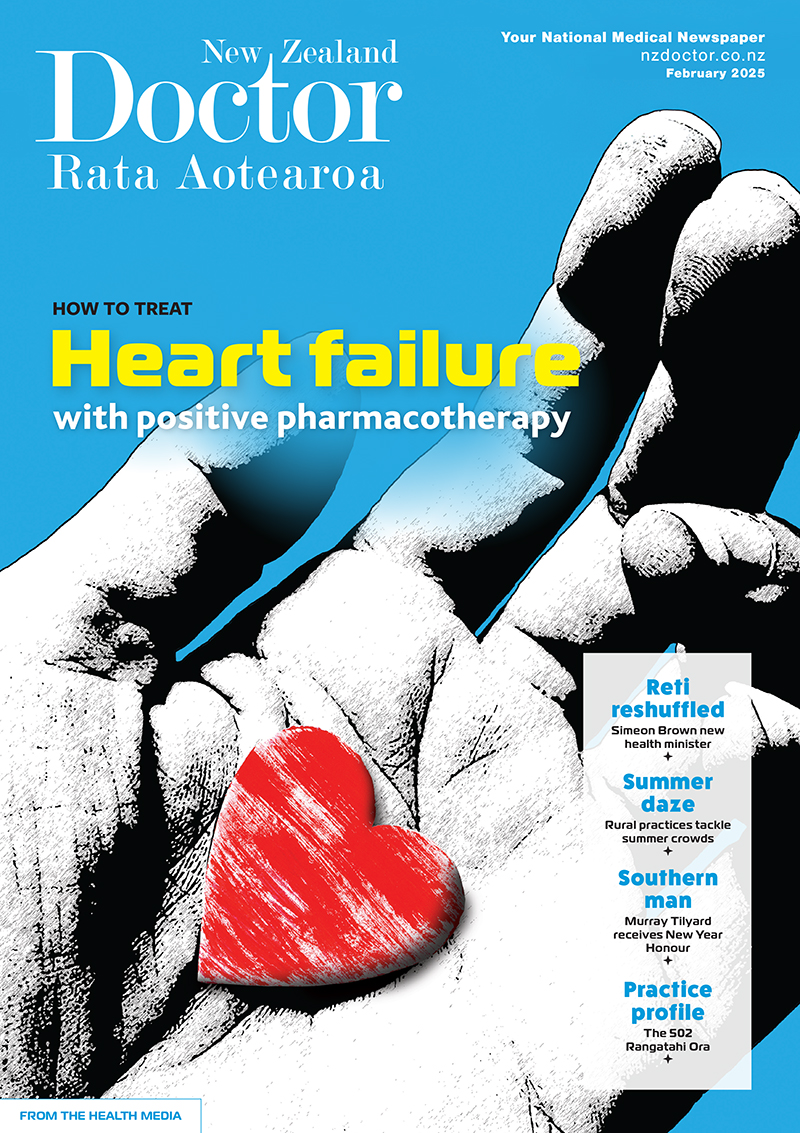Pharmacist prescribers Linda Bryant and Leanne Te Karu discuss positive polypharmacy for heart failure. Current evidence shows the intensive implementation of four medications offers the greatest benefit to most patients with heart failure, with significant reductions in cardiovascular mortality, heart failure hospitalisations and all-cause mortality
DHBs gone by July 2022, general practice reorganised into broader range of services
DHBs gone by July 2022, general practice reorganised into broader range of services

Reporter Martin Johnston was in the media lock-up at Parliament last week for the announcement about major changes to the health system. This is his overview of decisions made so far on new structures
- The 20 DHBs disappear as of July next year.
- A new agency, Health New Zealand, with regional divisions, will commission primary care services and run a hospital network.
- Primary and community health providers will be funded through localities, the size and shape of which are to be determined by Health NZ and a new Māori Health Authority.
- The Ministry of Health will shrink, to an agency that advises the Government, monitors system performance, sets strategic direction, is responsible for regulation and ensures financial stability.
- The Māori Health Authority will have joint decision-making rights on national strategies, policies and plans that affect Māori at all levels of the system, and will have commissioning powers.
- A new Public Health Agency will sit as a business unit in the ministry, while the regional public health units will come together under Health NZ.
DHBs will disappear, and primary and community care will be organised in locality networks, under changes unveiled by health minister Andrew Little on 21 April.
The Government will replace DHBs with a new Crown entity, Health New Zealand, Mr Little said in a speech to guests in Parliament’s Banquet Hall.
Health NZ will have four regional divisions, three in the North Island and one in the South. These will commission and fund services from hospitals and Tier 1 (primary and community) services. Health NZ will also take control of the network of public hospitals.
Alongside Health NZ will be the Māori Health Authority, which will be able to commission services directly. It will have joint decision-making rights to agree on national strategies, policies and plans that affect Māori at all levels of the system.
The authority will directly fund services targeted at Māori, including kaupapa Māori services. Existing DHB Iwi-Māori Partnership Boards will be given a formal role, including agreeing on local priorities with Health NZ.
The Ministry of Health will be slimmed down mainly to a policy and advisory body for the Government, although it will gain a new public health business unit and have a stronger oversight role.
Primary and community services will be organised in locality networks, but the number of these has not been stated.
Mr Little said: “We are going to put the emphasis squarely on primary and community healthcare and will do away with duplication and unnecessary bureaucracy between regions, so that our health workers can do what they do best – keep people well.
“The reforms will mean that for the first time, we will have a truly national health system, and the kind of treatment people get will no longer be determined by where they live.”
New Zealand Doctor Rata Aotearoa asked Stephen McKernan, head of the Health and Disability System Transition Unit in the Department of the Prime Minister and Cabinet, who would own localities.
Mr McKernan said this would be determined by the commissioning function of Health NZ, in consultation with localities.
PHOs could support locality networks, Mr McKernan says, but would have to be a bit broader.
A locality would encompass aged residential care, pharmacy, home-based support services and other Tier 1 services as identified in the final report of the Health and Disability System Review Panel.
In the panel’s report, these were: GPs, pharmacists, midwives, allied health professionals, Māori and Pacific providers, dentists and dental therapists, home care workers, district nurses, community mental health services, public health nurses and aged-care providers.
The reforms were sparked by the review, but have gone further than its recommendations. For example, the review report said to slash the number of DHBs, not abolish them, and advocated a Māori Health Authority that had monitoring and advisory functions only.
How services are delivered will be based on locality plans, created with communities alongside Iwi-Māori Partnership Boards.
A health reform white paper, Our health and disability system, has additional notes on primary and community care.
Mr Little says the reforms herald a change in focus.
“We will treat people before they get sick so they don’t need to go to hospital, thereby taking the pressure off hospitals.”
With regard to disability support services, he says more work is needed and advice has been requested.
“We…are committed to working with the sector as we continue to update our health system.”
Asked at a later media conference about the future of PHOs, Mr Little noted they were not statutory bodies.
“They emerged in the system as it is at the moment. In the end what happens with PHOs will be decided through commissioning decisions. There are some PHOs that are doing good things, innovative stuff; there are some who frankly are not.
“So, when it comes to the locality planning issues and the commissioning decisions by the regional divisions of Health NZ, if PHOs are offering services that are out of date, old-fashioned and don’t meet needs, then they won’t be commissioned.”
Asked if the new health bodies would hold public meetings, as DHBs do, he indicated they would not.
“The engagement will be at the locality level so more localised level, and it will be a combination of both the health providers but actually community representatives as well.”
With the ministry’s reduced role, it is expected to need fewer staff, although some are likely to move to the new organisations.
The ministry will advise the Government, monitor system performance, set strategic direction, be responsible for regulation and ensure financial stability.
All DHB staff are to be transferred to Health NZ in July next year on their existing terms and conditions.
Mr Little says the ministry will still be headed by the director-general of health, “who remains the head of the health system”.
A new Public Health Agency – responsible for public health policy, strategy, monitoring and intelligence – will be within the ministry.
Health NZ will include a national public health service, bringing together the current 12 public health units in a single service.
The Health Promotion Agency will move into Health NZ.
A new expert advisory committee on public health will be created to advise the Government.
Addressing the need for change, Mr Little says in his speech notes that the health system needs to become smarter, and more fair, tackling inequity, inconsistent access and differing levels of service around the country. And it needs to become less complex – having “20 sets of decision-makers”, a reference to the 20 DHBs, causes duplication, variability and inefficiency.
The reforms are also an opportunity to live up to the Crown’s obligations under Te Tiriti o Waitangi, he says.
“The establishment of the Māori Health Authority is a real step towards tino rangatiratanga in health.”
Health funding hasn’t yet been addressed. The review report recommended a legislated annual health funding adjustment, a ring fence for Tier 1 (primary and community) funding, and a higher weighting of at least 20 per cent in Tier 1 funding to Māori and Pacific populations.
“Longer-term decisions about funding are still to be made,” Mr Little said.
Interim versions of Health NZ and the Māori Health Authority will be established in coming weeks and acting CEOs will be appointed, he says.
“Permanent appointments will be made in the early part of next year, and I expect the necessary legislation to be passed by April [2022].”
The reforms will be implemented over three years.




